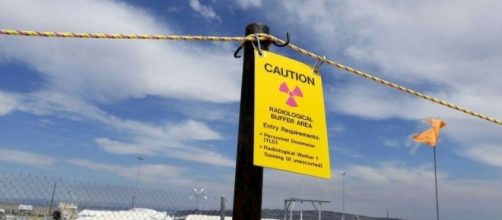The US Department of Energy has set in motion emergency operations after reports came out of the collapse of a portion of a tunnel associated with the nuclear waste site in Hanford, Washington State.
This tunnel is several hundred feet long and is used as the resting place of contaminated material, and a 20-feet portion of that tunnel suffered a cave-in that has taken the authorities by surprise. Workers have been asked to evacuate, and restriction is imposed on people to access to the area.
The Hanford nuclear waste site
According to New Zealand Herald, the site is a dumping ground for nuclear waste that is generated in the nearby processing plants.
The spent fuel is transported by rail from a reactor area to the chemical processing facility. Once there, dangerous items like plutonium and uranium are extracted and separated.
The plant is located near the middle of the nearly 580-square mile Hanford site and the contaminated equipment are left inside the tunnels. Some of these contaminated items include rail wagons that were used for transportation. Incidentally, these tunnels are long ones and are concealed by sufficient depth of soil to ensure safety from radiation but, in spite of all precautions, the cave-in has happened and it has led to panic.
The nuclear waste is generated by reactors at Hanford that used to produce plutonium for the nuclear weapons program and uranium metal fuel for commercial reactors.
Subsequently, the production of the former stopped in 1980 and the program to clean up the waste started in 1989.
Reasons for the cave-in
The cave-in of the soil is reported from the vicinity of one of the tunnels located in the proximity of the Plutonium Uranium Extraction Facility (PUREX) and the amount of the cave-in is an area of approximately 4 feet by 4 feet. It was discovered during routine check of the area and there are no reports of any contamination.
It is understood that the construction of the tunnels are robust enough and sudden cave-in is not possible in the normal course. However, there could have been unforeseen vibrations in the region that caused the tunnel to collapse.
The budget for cleanup of Hanford, a federal facility, is pegged at about $2.3 billion in the current fiscal year and more than half (about $1.5 billion) is earmarked for the management and treatment of the huge amount of radioactive liquid waste that is stored in underground storage tanks.
It is a major task and any loose ends could lead to an environmental disaster because nuclear waste is a product that must be handled with kid gloves.
One must not forget incidents that have already taken place in other parts of the world like Chernobyl and Fukushima and must leave no stone unturned to ensure total freedom of Hanford from nuclear contamination.


